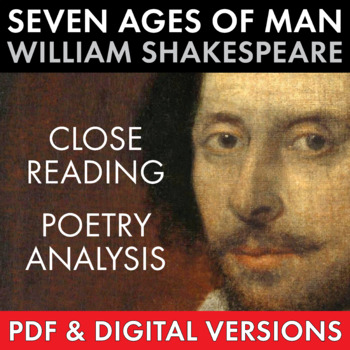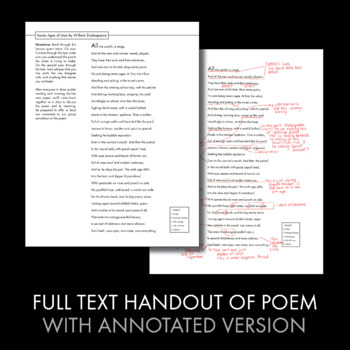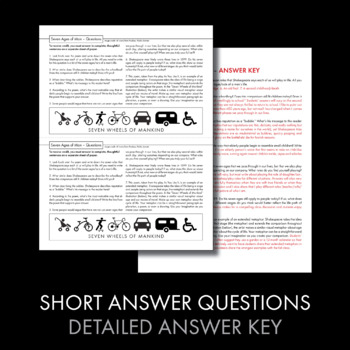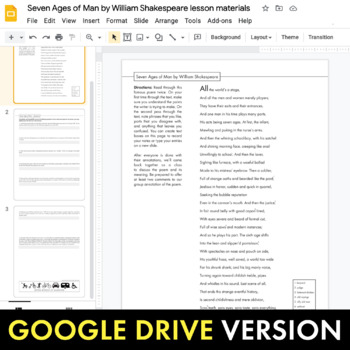"Seven Ages of Man" Close Read Shakespeare, Extended Metaphor, PDF & Google App
- PDF
- Google Apps™

What educators are saying
Description
Use William Shakespeare’s famous “All the World’s a Stage” monologue from As You Like It as a stand-alone lesson on extended metaphor. This 45-minute lesson begins with a close reading of the poem on a handout designed with wide margins for students to record their mental interactions with the text. Then, project a copy of the poem on your white board and annotate Shakespeare’s words together with your class. I’ve included a completed annotation of the poem to serve as teacher prep materials, but you could also show it to your class after the group’s annotation exercise to see what a different person’s annotation might look like. Next, hand out the worksheet that includes seven depth-of-knowledge questions that will require students to dig back into the text and dig deep into their own minds. When students are finished, launch a full-class discussion as you work through the answers together. Finally, I’ve included two short video clip links of "Seven Ages of Man," both excellent, to use as you see fit.
Note: You do not need to teach As You Like It for this lesson to work with your class. This one-period lesson fits smoothly into any Shakespeare, poetry, or critical thinking unit and works equally well for middle school and high school students.
There are also specific lines in Mitch Albom's Tuesdays with Morrie and Shakespeare's Hamlet that work beautifully with the materials in this lesson.
This item downloads as a PDF and includes Google Drive versions of the student handouts.
Want more materials to help get your students excited about Shakespeare? Click HERE to view all of my Shakespeare lesson materials
Please note that this item is included in my 4-week poetry unit. Click HERE to check out my money-saving poetry lesson bundle. If you purchase the bundle, there's no need to buy this item separately.
This item is also included in my English 9-10 full-year curriculum. If you already own the full-year download, please do not purchase this item here individually. If you’d like to receive this item plus everything else needed to teach 180 days of English 9 or English 10 at a deeply discounted price, click here to learn more about the full-year curriculum download.
Thanks for stopping by!
Image credit: John Taylor, National Portrait Gallery, WikiMedia Commons, PD-ART, Public domain





